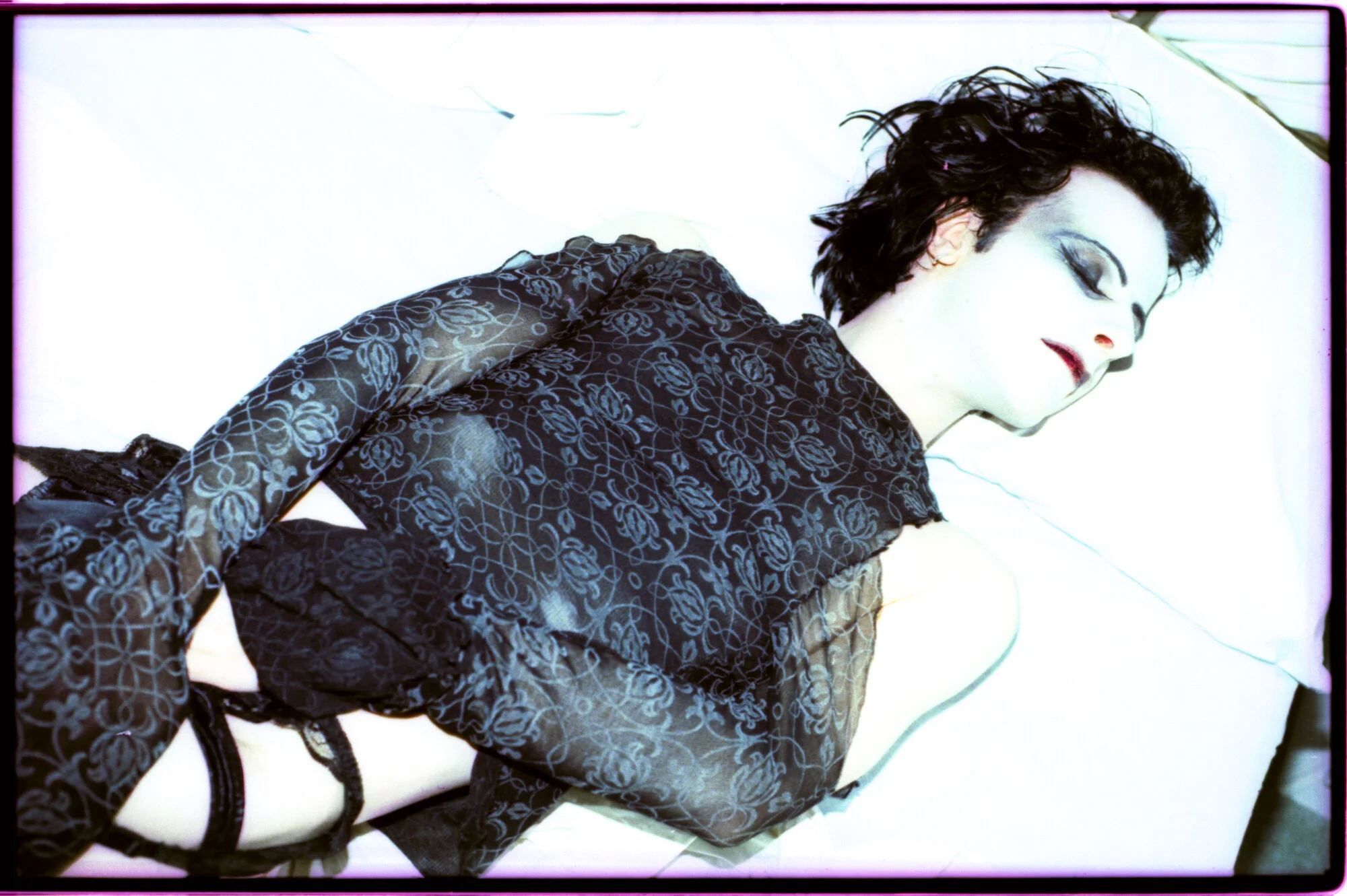
The Beautiful People & Black Paintings
Iconography of Goth and related subcultures at the turn of the century. Photography and painting, 1998-2004
The Beautiful People
Buy the book on Amazon.com
Publisher: Blurb (March 27, 2017)
ISBN-10: 1366179196
ISBN-13: 978-1366179197
Hardcover. 86 pages, 82 colour images
What is Goth?
by Ruairi MacCumhaill, 1998
We used to joke about it. Any attempt at definition was pointless, alienating more than it included.
Goth is an amorphous culture with its own internal fashions, often developments of each other, often in conflict, never simple, but still Goth. Our aesthetic appropriates many styles, symbols and movements from the past and from fiction; further confusing its singular identity.
We were on the fringes, derided by the music press and other critics who would normally define and disarm any youth culture.
Where did we come from?
…impotent anger gives way to angst. Punk was about conflict, bitterness, ripping off the surface politeness, playing hell with the political, religious and commercial mechanisms that rule our lives.
…and then nothing changed. Nothing changed after the Hippies either. We won the war but we lost the peace. We’re recycled, repackaged and sold again to older versions of ourselves. Goth is what we get instead of blues. Privileged, over-educated, under-experienced in an empty world. We’re lonely and over sensitive in a society which desensitises everyone else.
And we have a well developed sense of tragedy.
The feelings came first, twisting punk music and fashion into an alienated, self obsessed, manic-depressive narrative which multiplies all of our culture’s dramas of negativity. We raid the world’s creative output for symbols, methods and totems that will help us to exorcise our terrible burden. We do not belong in the world of today. Wrapped in illusions and painted with make-up, we say - this is more real than the pettiness of soap operas and stout that so fascinate you.
For it is only out of this world, in some suitably sanctified environment, dark gothic club or bedroom, that we can truly find comfort and enjoy ourselves.
Once you have suffered to a certain degree, you cannot then intelligently accept from that same society as caused your current abjection.
We are disgusted with this world. We are not political. The world is too far gone, and too large, for us to waste worry upon it. And it is in our nature to make our time here as special as possible. All seems beyond hope of improvement, and we seek only to distract ourselves from this truth, to lose or to enjoy ourselves. But we, at least, are aware that this is what we are doing. We juxtapose sartorial flamboyance with utter negativity. We dance on the edge of the abyss because it is the only place that we know.
Goth, unlike humanity’s other shallow distractions, is aware of its role. It is a self-conscious evasion of the horrors of this world, not a celebration of them.
We are not prophets of suicide, nor satanists, nor delusory vampires. Previous analysts of our ‘movement’ have attempted to define us through our ideals and intentions. What evades the anthropologists is the enjoyment of being a Goth, the evasion of a stultified norm, the possibilities for self expression offered by our music, fashion and society.
It is the act of being a Goth which animates us, there is no revelatory end ambition. There is no apocalypse, no drama other than that which we ourselves generate.
Desolation Angels - we could be no other way.

